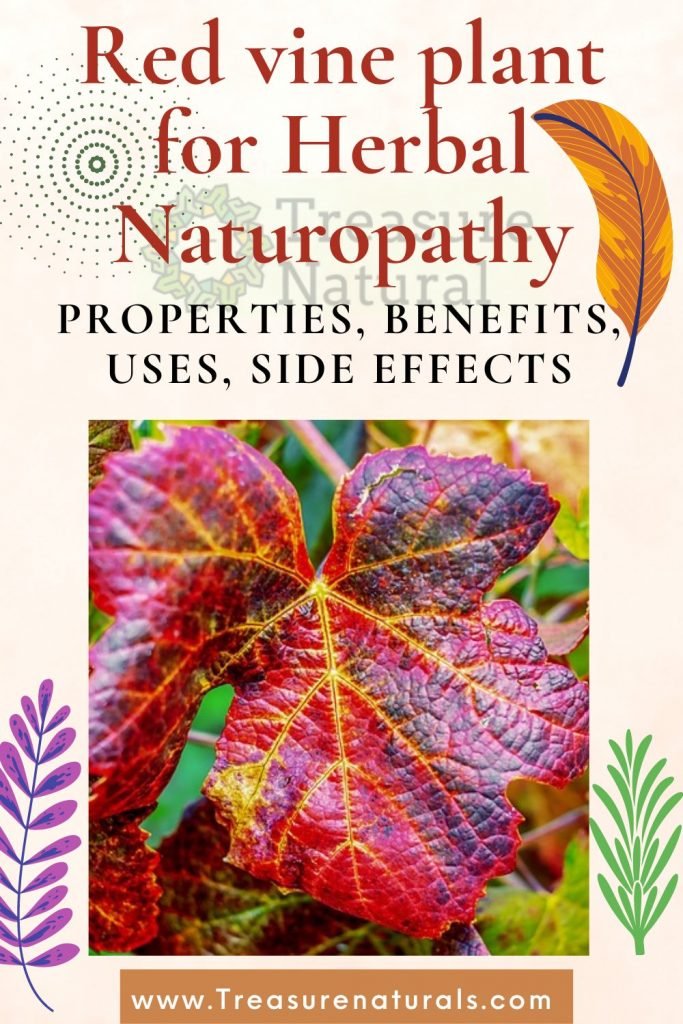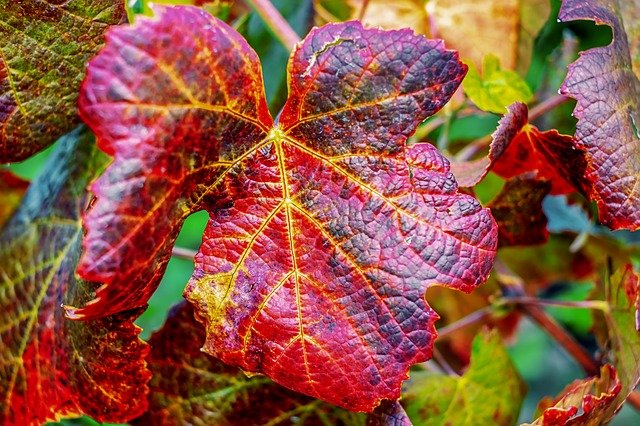
The red vine ( Vitis vinifera ) is a plant of the Vitaceae family. Known for its anti-inflammatory properties, it is useful against varicose veins, hemorrhoids and cellulite. Let’s find out better.
Properties of the red vine
The active ingredients contained in the leaves harvested in autumn, when they take on reddish hues, from which the term “red vine” originates, belong to the category of polyphenols, in particular bioflavonoids (anthocyanidins and proanthocyanidins ), and carry out an intense antioxidant and anti-inflammatory. Their most important action is the tonic and vasoprotective one, of care of the circulatory system, where they positively influence the vascular permeability, preventing edema and swelling .
Even the seeds and the skin of the berries contain a phytocomplex rich in flavonoids, anthocyanins, polyunsaturated fatty acids and vitamin P, and play a very useful action in veno-lymphatic insufficiency, in cardiovascular diseases and for those disorders that involve circulatory problems in the eyes, in particular at the level of the retina.
The red vine is therefore indicated in all forms of varicose veins, phlebitis, capillary fragility, couperose, edema, hemorrhoids , cellulite , water retention, blood stasis and heaviness in the lower limbs.
How to use
INFUSION : 1 level spoonful of red vine leaves, 1 cup of water
Pour the leaves into the boiling water and turn off the heat. Cover and leave to infuse for 10 min. Filter the infusion and drink it between meals to take advantage of the anti-inflammatory action for the benefit of the circulatory system.
Red grape mother tincture : 40 drops in a little water three times a day between meals.
Contraindications of the red vine
The use of the red vine is not recommended in case of pregnancy and breastfeeding. In rare cases, following the intake, there have been disorders such as: difficult digestion, nausea, dizziness and headache, itching and hives. When such side effects occur, it is best to contact a doctor.
Description of the plant
Irregular climbing shrub, with sparse branching but very developed in length, even several meters. The stem is twisted and irregular. The young branches, often hairy, have a cirrus on the opposite side of the leaf which allows the plant to attach itself to the supports. The deciduous lobed leaves, with an irregularly toothed margin, at the end of their life cycle, lose their normal green color, acquiring the typical red color, before detaching and falling.
The flowers are gathered in panicle inflorescences, first erect, then pendulous. The fruit is a berry called acino, typically gathered in clusters, known as grape. The color of the ripe berry varies, according to the grape variety, from green to yellow, from pink to purplish-red, from black or to bluish-black, but the intensity and tone of the color may also vary depending on the environmental conditions, in especially the lighting.
The habitat of the red vine
The red vine is a plant native to southern Europe and western Asia, currently present in all continents except Antarctica. It is cultivated in the warm temperate regions of the world for the fruit and for the production of wine.
Background

The Sumerians already considered this plant “the herb of life” and worshiped a goddess known as the Vine Goddess or Mother Vine , even mentioned in the Indian saga of Gilgamesh: it is this female deity intent on pouring wine that the hero addresses to ask how to achieve immortality. Therefore, the vine since the dawn of civilization was considered a symbol of youth and eternal life.
In the Greek world, wine was considered a gift from the gods and all myths agree in attributing to Dionysus, the youngest immortal son of Zeus, the introduction of the cultivation of the vine among men, so much so that he became the god of this drink par excellence. In medicine Hippocrates himself recommended wine to cure many diseases and Vitis vinifera preparations were used in the treatment of dysentery and in case of heavy menstruation, while for external use they were used in case of chilblains and varicose veins.






